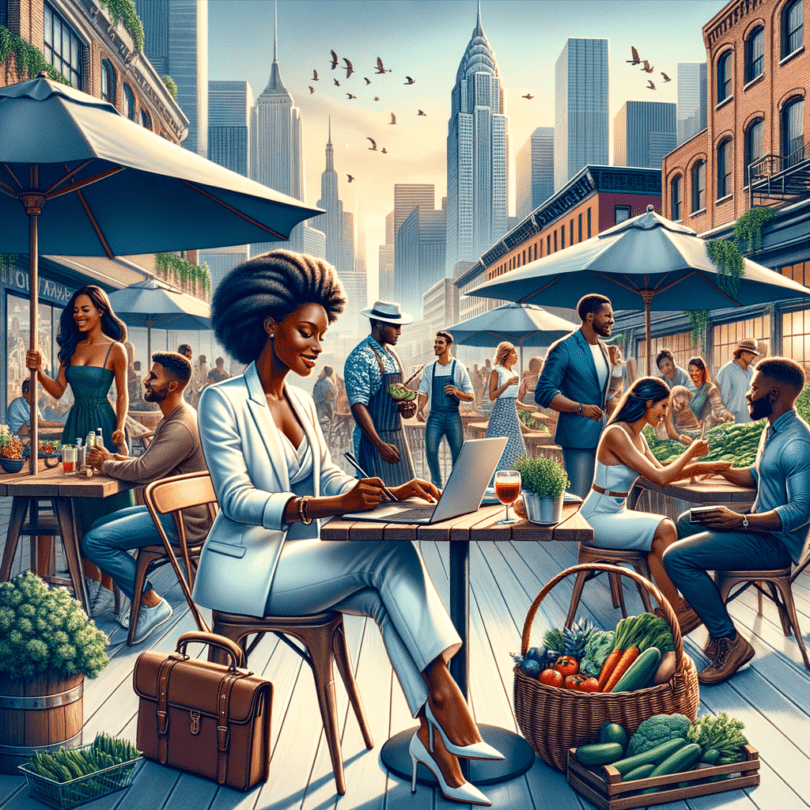It seems socially acceptable to ask single individuals “Why are you single?” yet rarely do people question married individuals with “Why are you married?” Sociologist Kris Marsh aims to challenge this discrepancy with her book, “The Love Jones Cohort: Single and Living Alone in the Black Middle Class.” In this book, she delves into the lives of single people and the societal stigma surrounding their choice to remain unmarried. The term “The Love Jones Cohort” was coined by my mentor and I during a conversation over coffee on a hot day in Chapel Hill, North Carolina. The concept to study single and living alone Black middle class men and women sprang from both media and personal experiences. I noticed a shift in media portrayal of Black characters, moving from married couples to single individuals, which I traced back to the 1997 film “Love Jones.” This film, featuring Larenz Tate and Nia Long, followed characters and their friends navigating careers and relationships, touching on themes such as relationships, premarital sex, partner selection, the gender pay gap, and the potential health implications of remaining single. Despite being 25 years old, the film remains significant in Black culture.
In the 1980s and 1990s, the media stereotype for the middle class, whether Black or white, was often a married couple with children, exemplified by the Huxtable family from “The Cosby Show.” This show featured an obstetrician and a corporate lawyer raising their four children and ran from 1984 to 1992. Post “The Cosby Show,” a wave of TV shows and films showcased Black middle-class characters with a new profile: young, educated, never-married professionals often living alone or with unmarried friends. Shows like “Living Single” and “Girlfriends,” which aired from 1993 to 1998 and from 2000 to 2008 respectively, centered on the lives of Black friends dealing with careers and relationships. More recent shows in this vein include “Being Mary Jane” and “Insecure,” which focused on the lives of young Black women balancing career and personal lives while tackling social and racial issues. Films like “The Brothers,” “Two Can Play That Game,” and “Deliver Us From Eva,” also reflected this demographic. This media trend mirrors real-world changes, where the number of middle-class Black Americans aged 25-44 living alone rose from 6% in 1980 to 14% in 2000, remaining consistent since.
In my 2015 interviews with the Love Jones Cohort, I found that many individuals actively chose to remain single. Genesis, working in brand management, decided not to date to focus on other priorities, while Joanna, a communications specialist, enjoyed the economic independence of singlehood. However, purchasing a home alone presented financial challenges. Freedom and independence were essential to their lifestyles, though they often experienced “situational loneliness” on occasions like Valentine’s Day. This made friendships and social networks incredibly important, with friends often regarded as family. Women in the group saw female friendships as crucial for emotional support, while men described their friendships in practical terms. Reggie, a financial analyst, spoke of socializing with friends at his apartment complex. Discussions on Black singlehood frequently suggest that Black singles, particularly women, are too selective and should adjust their standards for partnerships or marriage. However, the women hoped to partner with educated Black men. Research indicates that individuals tend to seek partners from similar social and economic backgrounds, yet Black women outpace Black men in education. According to 2018 Census data, 19% of Black men aged 25 to 29 held bachelor’s degrees compared to 26% of Black women, creating disparities in resources and social status. Marsh argues that racism and gendered racism limit personal choices, impacting discussions on Black singlehood. Sociologist Celeste Vaughn Curington introduced “digital-sexual racism” to describe how Black daters are simultaneously sought after and ignored on dating platforms based on their race.

